A Lifetime of Better Breathing
Unique, patented pacifier designed to mimic the physiological benefits of breast feeding on palate and dental development
Study: Breast Suckling Aids Proper Jaw Development
Key Points:
- To date most breastfeeding benefits have been attributed to the content of mother’s milk, but breastfeeding also places beneficial orthopedic forces on the jaws (similar to the forces of Functional Jaw Orthopedics—the newest form of orthodontics).
- Breastfeeding forces impact the jaws during a very rapid period of infant jaw growth.
- Breast suckling aids proper development of the jaws which is also good for the development of a baby’s airway. This may help prevent problems with sleep-disordered breathing, such as sleep apnea.
- Bottle, pacifier and digit sucking deform jaws and airways.


The Unknown Breastfeeding Benefit
An infant’s palate is soft, malleable bone. Breastfeeding naturally redirects suckling pressure lateral instead of vertical to help widen baby’s palate and achieve the broad and shallow shape that is essential for healthy breathing, ideal oral formation, and optimal facial development.
Study: Breastfeeding Benefits
Key Points:
- Recent epidemiological and biological findings from the past decade expand on the known benefits of breastfeeding for women and children.
- Breastfeeding duration is typically shorter in high-income countries than in those that are resource-poor.
- Our meta-analyses indicate breastfeeding provides additional protection against child infections and malocclusion, increases in intelligence, and probable reductions in overweight and diabetes.
- The scaling up of breastfeeding to a near universal level could prevent 823,000 annual deaths in children younger than 5 years.
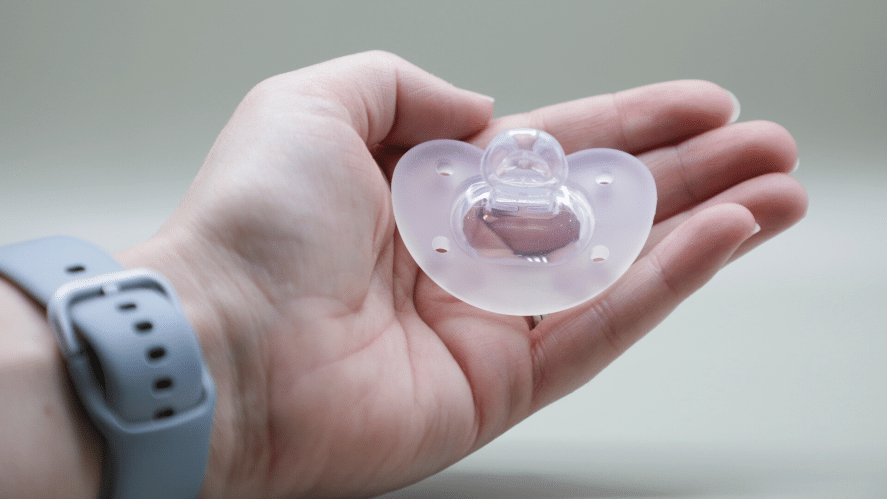
The Problem
9 out of 10 children in America suffer from at least one symptom of Pediatric Sleep Disorder Breathing, which can lead to respiratory issues, cardiovascular difficulties, and even learning disabilities. These issues can impact their health for years. Wouldn’t it be incredible if you could help minimize these problems with something as simple as a pacifier?
Study: Breastfeeding and Jaw Development
Key Points:
- It’s important to recognize the connection between sleep-disordered breathing, orthodontic growth, and other common childhood problems. These issues are very closely interrelated.
- A 2013 report discussed the connection between breastfeeding, misaligned teeth, ADHD, and obesity throughout the first several years of life.
- They outline a process that, for many children, looks like this:
- Not breastfeeding leads to poor jaw growth, malocclusion, and improper airway growth.
- These factors together increase the risk of childhood sleep apnea.
- Childhood sleep apnea can present as (or be a root cause of) ADHD, which is associated with misaligned teeth.
- In healthy weight children with sleep apnea, the primary cause of sleep apnea is considered to be poor facial and jaw growth.
Behavioral Issues
ADD and ADHD
Aggressive Behavior
Difficulty Learning
Respiratory Issues
Mouth Breathing
Swollen Tonsils & Adenoids
Asthma
Sleep-Related Issues
Bed Wetting
Snoring
Sleep Disordered Breathing
Physical Health Issues
Cardiovascular Difficulties
Obesity
Crooked Teeth
Study: The Incidence of Sleep Disordered Breathing Symptoms in Children
Key Points
- A study in the Journal of the American Orthodontic Society shows that 90% of children exhibit at least one symptom of SDB (Pediatric sleep-disordered breathing), and 60% of children exhibit 4 or more symptoms
- Potential symptoms and consequences of untreated pediatric SDB may include:
- Snoring—The most obvious symptom of SDB is loud snoring that is present on most nights.
- Irritability—A child with SDB may become irritable, sleepy during the day, or have difficulty concentrating in school. He or she may also display busy or hyperactive behavior.
- Bedwetting—SDB can cause increased urine production at night, which may lead to bedwetting.
- Learning difficulties—Children with SDB may become moody and disruptive, or not pay attention, both at home and at school. SDB can also be a contributing factor to attention deficit disorders in some children.
- Slow growth—Children with SDB may not produce enough growth hormone, resulting in abnormally slow growth and development.
- Cardiovascular difficulties—OSA can be associated with an increased risk of high blood pressure, or other heart and lung problems.
- Obesity—SDB may cause the body to have increased resistance to insulin, and daytime fatigue can lead to decreased physical activity. These factors can contribute to obesity.
Introducing Breathe Pacifiers
Breathe Pacifiers may look like the pacifiers you’re used to, but feature design innovations so remarkable and unique they’ve been granted patents in countries around the world.
Patents
The granting of multiple United States and International patents underscores how unique Breathe pacifiers and bottle nipples are. No other pacifier or bottle nipple is designed to offer all the vitally important benefits Breathe offers your baby. Now that you can provide your baby with essential physical development benefits previously only available by breast feeding, why use any other pacifier or bottle nipple? Optimum sizes for every stage of growth.
USPTO Patent #XXXX | USPTO Patent #XXXX | International Patent #XXXX
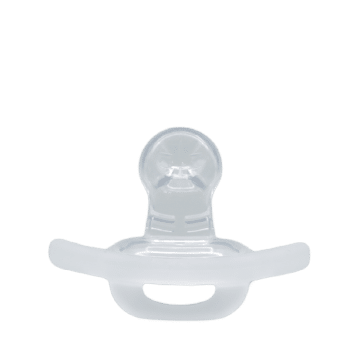
Stage 1:
0-3 Months
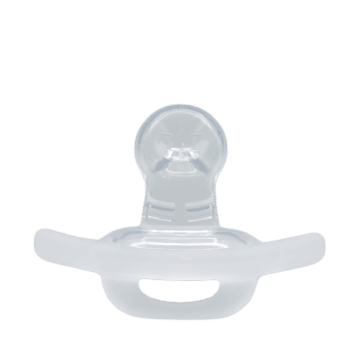
Stage 2:
4-6 Months
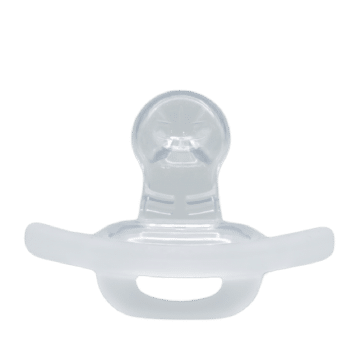
Stage 3:
7-12 Months
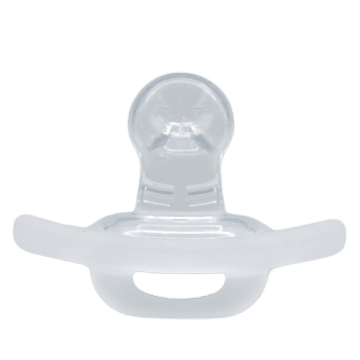
Stage 4:
13+ Months
To support the goal of ideal oral and facial development, Breathe Pacifiers come in four sizes to match your baby’s growth. Babies vary widely in size and growth patterns. Our age recommendations are guidelines based on averages. It is always wise to check with your pediatrician to review the fit of pacifiers and bottle nipples for your baby’s mouth.
How it works
When a baby is nursing, the upward suckling pressure from baby’s tongue flattens Mom’s breast, converting the vertical force into gentle lateral pressure.
Breathe Pacifiers feature a unique design developed with the help of the engineering team at Arizona State University’s Science and Technology Centers using computer modeling and finite element analysis to mimic this natural process. The goal is to give your baby the benefits of breastfeeding throughout their early development.
Study: Breastfeeding Stimulates the Development of the Orofacial Complex
Key Points
- The method and technique of feeding a young child affects the shape of the bones and soft tissues that make up the face and jaw.
- Breastfeeding stimulates the muscles and growth of the jaw bones.
- Breastfeeding is the recommended method of feeding in the first six months of life. It is encouraged to continue natural feeding in later months…
Medically Supervised Research
Research conducted with the highest scientific and ethical standards confirms that Breathe Pacifiers encourage desirable palate development. Click the link to learn more about our highly encouraging ongoing Doctor Supervised Research Study.
What Moms Are Saying About Breathe
Real babies. Real stories of how Breathe Pacifiers are changing lives for the better…one baby at a time!






